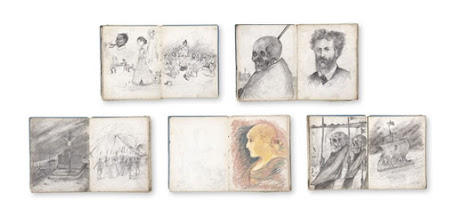Léon Spilliaert's work is on exhibition at the Royal Academy until the 20th of September. This is an artist few of you will be aware of because it is only recently that critical opinion has shifted in his direction and work that was considered very inferior Ensor type imagery, is now celebrated as work that captured a certain type of mental anguish that existed at the time. Perhaps it's due to our own day's preoccupation with the mental pressures of being locked down and being constantly made aware of the invisible dangers of virus attacks, that has made critics re-visit Spilliaert's images and now see them as important.
Again we have a story of a once thought of poor or unimportant artist's work, being elevated into the parthenon of great art. On the one hand we all benefit by now being able to see his work, but on the other hand it makes me very cynical, as it is hard to resist thinking about the capitalist machinery behind all this reappraisal. Who will benefit from the sudden rise in auction prices and will any of the many struggling artists throughout the world gain anything from his travel from obscurity to fame, beyond a feeling of "well perhaps maybe"...?
The work is though interesting and it reminded me of Munch more than Ensor. The moody threat that lies behind certain types of image abstraction was I thought very potent. As we select out or abstract things from the world in order to envisage it, we are left with the things that reflect our own proclivities, in this case Spilliaert was obviously always aware of the threat that lies in dark pools of shadow, a half seen thing or a sinuous shape. All of which are things that we can flesh out through drawing and it is a certain type of reductionist drawing that lies at the root of his image making.






No comments:
Post a Comment